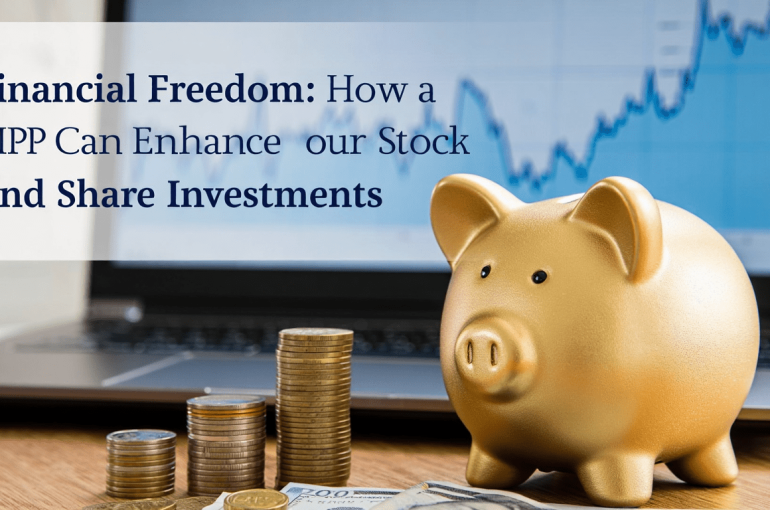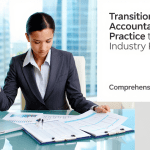Financial Freedom: How a SIPP Can Enhance Your Stock and Share Investments

Financial Freedom: How a SIPP Can Enhance Your Stock and Share Investments
Introduction to Financial Freedom
Understanding Financial Freedom
Financial freedom is a state where an individual has sufficient financial resources to live the lifestyle they desire without being dependent on a regular paycheck. It involves having control over your finances, being free from debt, and having the ability to make choices that are not solely driven by financial constraints. Achieving financial freedom means having enough savings, investments, and cash on hand to afford the lifestyle you want for yourself and your family.
Importance of Financial Freedom
Financial freedom is crucial for several reasons. It provides peace of mind, reduces stress, and allows individuals to focus on other important aspects of life such as health, relationships, and personal growth. It also offers the flexibility to pursue passions, hobbies, and opportunities that may not be financially rewarding but are personally fulfilling. Financial freedom can lead to a more balanced and satisfying life.
Key Components of Financial Freedom
Savings
Building a robust savings account is the foundation of financial freedom. Savings provide a safety net for emergencies and unexpected expenses, ensuring that you are not forced into debt when unforeseen circumstances arise.
Investments
Investing is a critical component of achieving financial freedom. By putting money into stocks, bonds, real estate, or other investment vehicles, individuals can grow their wealth over time. Investments can provide passive income, which is essential for maintaining financial freedom.
Debt Management
Effectively managing and eliminating debt is vital for financial freedom. High levels of debt can be a significant barrier, as they require regular payments that can limit financial flexibility. Strategies such as debt consolidation, refinancing, and disciplined repayment plans are essential for reducing and eventually eliminating debt.
Budgeting
Creating and adhering to a budget is a practical step towards financial freedom. A budget helps track income and expenses, ensuring that spending aligns with financial goals. It also helps identify areas where costs can be cut, allowing for more savings and investments.
Benefits of Financial Freedom
Reduced Stress
One of the most significant benefits of financial freedom is the reduction of financial stress. Knowing that you have the resources to handle emergencies and that you are not living paycheck to paycheck can significantly improve mental and emotional well-being.
Increased Opportunities
Financial freedom opens up a world of opportunities. It allows individuals to take risks, such as starting a business or changing careers, without the fear of financial instability. It also provides the means to invest in education, travel, and other enriching experiences.
Better Retirement
Achieving financial freedom ensures a more comfortable and secure retirement. With sufficient savings and investments, individuals can retire on their terms, without worrying about running out of money or being dependent on others.
Steps to Achieve Financial Freedom
Setting Financial Goals
The first step towards financial freedom is setting clear, achievable financial goals. These goals should be specific, measurable, attainable, relevant, and time-bound (SMART). Having well-defined goals provides direction and motivation.
Creating a Financial Plan
A comprehensive financial plan outlines the steps needed to achieve financial goals. It includes budgeting, saving, investing, and debt management strategies. A financial plan serves as a roadmap, guiding individuals towards financial freedom.
Continuous Learning
Financial literacy is crucial for achieving and maintaining financial freedom. Continuously educating oneself about personal finance, investment strategies, and market trends can help make informed decisions and avoid common financial pitfalls.
Seeking Professional Advice
Consulting with financial advisors or planners can provide valuable insights and personalized strategies for achieving financial freedom. Professionals can help create tailored financial plans, offer investment advice, and provide guidance on complex financial matters.
Understanding SIPPs (Self-Invested Personal Pensions)
What is a SIPP?
A Self-Invested Personal Pension (SIPP) is a type of pension plan that allows individuals to have greater control over their retirement savings and investments. Unlike traditional pension schemes, SIPPs offer a wider range of investment options, including stocks, shares, bonds, mutual funds, and even commercial property. This flexibility enables investors to tailor their pension portfolio according to their financial goals and risk tolerance.
How Does a SIPP Work?
A SIPP operates similarly to other pension plans in that contributions are made into the account, which then grow tax-free until retirement. However, the key difference lies in the level of control and choice over the investments. Investors can choose to manage their SIPP themselves or appoint a financial advisor to make investment decisions on their behalf.
Contributions and Tax Benefits
Contributions to a SIPP are eligible for tax relief, meaning the government adds money to your pension pot based on your income tax rate. For example, if you are a basic rate taxpayer, for every £80 you contribute, the government adds £20, making the total contribution £Higher and additional rate taxpayers can claim further tax relief through their tax returns.
Investment Choices
SIPPs offer a broad spectrum of investment options, including:
- Individual stocks and shares
- Exchange-traded funds (ETFs)
- Unit trusts and investment trusts
- Government and corporate bonds
- Commercial property
- Cash and cash equivalents
This extensive range of choices allows investors to diversify their portfolios and potentially enhance their returns.
Types of SIPPs
There are generally two types of SIPPs: Full SIPPs and Low-Cost SIPPs.
Full SIPPs
Full SIPPs offer the widest range of investment options and are typically suited for experienced investors or those with larger pension pots. They often come with higher fees due to the extensive range of services and investment choices available.
Low-Cost SIPPs
Low-Cost SIPPs, also known as Lite SIPPs, offer a more limited range of investment options but come with lower fees. These are generally suitable for investors with smaller pension pots or those who prefer a more straightforward investment approach.
Fees and Charges
SIPPs come with various fees and charges that can impact your overall returns. Common fees include:
- Annual management fees
- Dealing charges for buying and selling investments
- Transfer fees for moving your SIPP to another provider
- Exit fees for closing your SIPP
It’s crucial to understand these fees and compare different SIPP providers to find the most cost-effective option for your needs.
Regulatory Framework
SIPPs are regulated by the Financial Conduct Authority (FCA) in the UK, ensuring that providers adhere to strict standards of conduct and transparency. This regulatory oversight provides an additional layer of security for investors, safeguarding their retirement savings.
Risks and Considerations
While SIPPs offer greater flexibility and control, they also come with certain risks. The value of investments can go down as well as up, and there is no guarantee of returns. It’s essential to conduct thorough research or consult with a financial advisor to make informed investment decisions. Additionally, the tax benefits associated with SIPPs depend on individual circumstances and may change in the future.
Who Should Consider a SIPP?
SIPPs are generally suitable for:
- Experienced investors who want greater control over their retirement savings
- Individuals with larger pension pots seeking a diverse range of investment options
- Those who are comfortable managing their investments or working with a financial advisor
For those who prefer a hands-off approach or have smaller pension pots, traditional pension schemes or low-cost SIPPs may be more appropriate.
Benefits of Investing in Stocks and Shares
Potential for High Returns
Investing in stocks and shares offers the potential for high returns compared to other investment vehicles such as bonds or savings accounts. Historically, the stock market has provided an average annual return of about 7-10% after adjusting for inflation. This potential for higher returns can significantly enhance your wealth over the long term, especially when dividends are reinvested.
Diversification
Stocks and shares provide an excellent opportunity for diversification. By investing in a variety of companies across different sectors and geographies, you can spread your risk. Diversification helps to mitigate the impact of poor performance in any single investment, thereby reducing the overall risk of your portfolio.
Ownership and Voting Rights
When you buy shares of a company, you become a part-owner of that company. This ownership often comes with voting rights, allowing you to have a say in important company decisions such as electing the board of directors or approving major corporate policies. This can be particularly rewarding if you are invested in companies you believe in and want to influence their direction.
Dividend Income
Many companies pay dividends to their shareholders, providing a steady stream of income. Dividends can be a reliable source of cash flow, especially for retirees or those looking for passive income. Reinvesting dividends can also compound your returns over time, further enhancing your investment growth.
Liquidity
Stocks and shares are generally considered to be liquid assets, meaning they can be easily bought and sold on the stock market. This liquidity provides flexibility, allowing you to quickly convert your investments into cash if needed. This is particularly beneficial in times of financial emergencies or when you need to reallocate your investment portfolio.
Inflation Hedge
Stocks and shares can act as a hedge against inflation. As the prices of goods and services rise, companies often pass these costs onto consumers, which can lead to higher revenues and profits. Consequently, the value of stocks may increase, helping to preserve your purchasing power over time.
Tax Advantages
Investing in stocks and shares through tax-advantaged accounts like a Self-Invested Personal Pension (SIPP) can offer significant tax benefits. Contributions to a SIPP are often tax-deductible, and the investments grow tax-free. Additionally, withdrawals during retirement may be taxed at a lower rate, providing further tax savings.
Capital Appreciation
One of the primary benefits of investing in stocks and shares is the potential for capital appreciation. As companies grow and become more profitable, the value of their shares can increase. This capital appreciation can result in substantial gains over time, particularly if you invest in high-growth companies or sectors.
Access to Global Markets
Investing in stocks and shares provides access to global markets, allowing you to invest in companies from around the world. This global exposure can offer additional diversification benefits and opportunities for growth that may not be available in your domestic market. Investing internationally can also help to spread geopolitical and economic risks.
Professional Management
Many investors choose to invest in stocks and shares through mutual funds or exchange-traded funds (ETFs), which are managed by professional fund managers. These managers have the expertise and resources to conduct thorough research and make informed investment decisions on your behalf. This professional management can enhance your investment returns and reduce the time and effort required to manage your portfolio.
How SIPPs Enhance Stock and Share Investments
Tax Efficiency
One of the primary ways Self-Invested Personal Pensions (SIPPs) enhance stock and share investments is through tax efficiency. Contributions to a SIPP are eligible for tax relief, meaning that the government effectively adds to your pension pot. For basic rate taxpayers, this means a 20% boost on contributions, while higher and additional rate taxpayers can claim back even more through their tax returns. This tax relief can significantly increase the amount of capital available for investment, allowing for greater potential returns.
Investment Flexibility
SIPPs offer a high degree of investment flexibility compared to traditional pension schemes. Investors can choose from a wide range of assets, including individual stocks, shares, bonds, mutual funds, and even commercial property. This flexibility allows investors to tailor their portfolios to their specific risk tolerance and investment goals. By having the ability to diversify across various asset classes, investors can better manage risk and potentially enhance returns.
Control Over Investment Choices
With a SIPP, investors have full control over their investment choices. Unlike traditional pension plans where investment decisions are often made by fund managers, SIPPs allow individuals to make their own investment decisions. This control can be particularly beneficial for experienced investors who have a clear strategy and understanding of the markets. It also allows for more agile decision-making, enabling investors to respond quickly to market changes and opportunities.
Potential for Higher Returns
The combination of tax efficiency, investment flexibility, and control over investment choices can lead to higher potential returns. By carefully selecting investments and taking advantage of tax relief, investors can maximize the growth of their pension pot. The ability to invest in a diverse range of assets also means that investors can seek out higher-yielding opportunities that may not be available in more restrictive pension schemes.
Cost-Effectiveness
SIPPs can also be cost-effective, particularly for those who are comfortable managing their own investments. While there are fees associated with maintaining a SIPP, such as annual management charges and dealing fees, these can be offset by the potential for higher returns and tax benefits. Additionally, many SIPP providers offer competitive fee structures, making it possible to find a plan that suits your budget and investment style.
Estate Planning Benefits
SIPPs offer advantages in terms of estate planning. Unlike some other pension schemes, SIPPs can be passed on to beneficiaries upon the investor’s death, often with favorable tax treatment. This can make SIPPs an attractive option for those looking to provide for their loved ones in the future. The ability to nominate beneficiaries and potentially avoid inheritance tax can enhance the overall value of the investment.
Access to Professional Advice
Many SIPP providers offer access to professional financial advice, which can be invaluable for investors looking to optimize their portfolios. Professional advisors can provide insights into market trends, help with asset allocation, and offer strategies for tax efficiency. This support can enhance the overall investment experience and help investors make informed decisions.
Long-Term Growth Potential
SIPPs are designed for long-term investment, which aligns well with the nature of stock and share investments. The long-term growth potential of equities can be fully realized within a SIPP, as the tax advantages and compounding returns work together to grow the pension pot over time. This long-term focus can help investors stay committed to their investment strategy, even during periods of market volatility.
Tax Advantages of SIPPs
Tax Relief on Contributions
One of the most significant tax advantages of a Self-Invested Personal Pension (SIPP) is the tax relief on contributions. When you contribute to a SIPP, the government effectively adds to your pension pot by providing tax relief at your marginal rate of income tax. For basic rate taxpayers, this means a 20% boost to contributions. Higher rate taxpayers can claim an additional 20% tax relief through their self-assessment tax return, and additional rate taxpayers can claim an extra 25%.
Tax-Free Growth
Investments within a SIPP grow free from capital gains tax and income tax. This means that any dividends, interest, or capital gains generated by the investments held within the SIPP are not subject to tax, allowing your investments to grow more efficiently over time.
Tax-Free Lump Sum
Upon reaching the age of 55 (rising to 57 in 2028), you can withdraw up to 25% of your SIPP as a tax-free lump sum. This can be a substantial benefit, providing a significant amount of money without any tax liability, which can be used for various purposes such as paying off debts, making large purchases, or reinvesting.
Inheritance Tax Benefits
SIPPs offer favorable treatment when it comes to inheritance tax. If you pass away before the age of 75, your SIPP can be passed on to your beneficiaries free of income tax. If you die after the age of 75, your beneficiaries will pay income tax on withdrawals at their marginal rate, but the SIPP itself remains outside of your estate for inheritance tax purposes.
Flexibility in Drawdown
SIPPs provide flexibility in how you draw down your pension. You can choose to take income in a way that minimizes your tax liability, such as taking smaller amounts to stay within a lower tax bracket. This flexibility can help you manage your tax exposure more effectively during retirement.
Carry Forward Allowance
If you have not used your full annual allowance for pension contributions in the previous three tax years, you can carry forward any unused allowance to the current tax year. This can significantly increase the amount you can contribute to your SIPP with tax relief, especially useful for those who receive a windfall or have irregular income.
Employer Contributions
Employer contributions to a SIPP are also eligible for tax relief. These contributions are treated as a business expense, reducing the employer’s corporation tax liability. For employees, these contributions do not count towards their annual allowance, providing an additional tax-efficient way to boost their pension savings.
Strategies for Maximizing SIPP Investments
Diversification
Diversification is a fundamental strategy for maximizing SIPP investments. By spreading your investments across various asset classes, sectors, and geographical regions, you can reduce risk and enhance potential returns. A well-diversified portfolio might include a mix of stocks, bonds, mutual funds, ETFs, and alternative investments such as real estate or commodities. This approach helps to mitigate the impact of poor performance in any single investment, ensuring a more stable and resilient portfolio.
Regular Contributions
Consistently contributing to your SIPP is crucial for long-term growth. Regular contributions, whether monthly or annually, take advantage of pound-cost averaging, which reduces the impact of market volatility. This strategy involves buying more shares when prices are low and fewer when prices are high, ultimately lowering the average cost per share over time. Setting up automatic contributions can help maintain discipline and ensure that you are consistently investing towards your financial goals.
Rebalancing
Rebalancing your SIPP portfolio periodically is essential to maintain your desired asset allocation. Over time, certain investments may outperform others, causing your portfolio to drift from its original allocation. Rebalancing involves selling overperforming assets and buying underperforming ones to restore the intended balance. This practice helps manage risk and ensures that your portfolio remains aligned with your investment objectives and risk tolerance.
Tax Efficiency
Maximizing the tax efficiency of your SIPP investments can significantly enhance your returns. SIPPs offer tax relief on contributions, tax-free growth on investments, and tax-free withdrawals up to a certain limit. To optimize tax efficiency, consider utilizing your full annual allowance, taking advantage of carry-forward rules, and strategically planning withdrawals to minimize tax liabilities. Additionally, investing in tax-efficient funds and products can further enhance your portfolio’s performance.
Investment Research and Due Diligence
Conducting thorough research and due diligence is vital for making informed investment decisions. This involves analyzing the financial health, performance history, and growth potential of individual stocks and funds. Utilizing tools such as financial statements, analyst reports, and market news can provide valuable insights. Staying informed about market trends and economic indicators can also help you identify opportunities and make timely adjustments to your portfolio.
Professional Advice
Seeking professional advice from a financial advisor or investment manager can provide valuable guidance and expertise. A professional can help you develop a tailored investment strategy, select appropriate investments, and navigate complex financial markets. They can also assist with tax planning, risk management, and retirement planning, ensuring that your SIPP investments are aligned with your long-term financial goals.
Monitoring and Review
Regularly monitoring and reviewing your SIPP investments is crucial for staying on track towards your financial objectives. This involves tracking the performance of your portfolio, assessing the impact of market changes, and making necessary adjustments. Setting up periodic reviews, such as quarterly or annual check-ins, can help you stay proactive and responsive to any shifts in your financial situation or investment goals.
Risks and Considerations
Market Volatility
Investing in stocks and shares through a Self-Invested Personal Pension (SIPP) exposes your investments to market volatility. The value of your investments can fluctuate significantly due to changes in market conditions, economic factors, and investor sentiment. This volatility can lead to substantial gains, but it can also result in significant losses, especially in the short term.
Investment Risk
Different types of investments carry varying levels of risk. Equities, for example, are generally considered higher risk compared to bonds or cash investments. Within equities, individual stocks can be more volatile than diversified funds. It’s crucial to understand the risk profile of each investment and how it fits into your overall investment strategy.
Lack of Diversification
A SIPP allows for a wide range of investment choices, but concentrating too much on a single asset class, sector, or geographic region can increase risk. Lack of diversification can make your portfolio more susceptible to market downturns in specific areas. Diversifying your investments across different asset classes and regions can help mitigate this risk.
Liquidity Risk
Some investments within a SIPP may not be easily convertible to cash. For instance, certain types of property investments or smaller company shares may be less liquid, meaning they can be harder to sell quickly without potentially incurring a loss. This can be a significant consideration if you need to access your funds quickly.
Regulatory and Tax Changes
Pension regulations and tax laws are subject to change. Future changes in legislation could impact the benefits of investing through a SIPP, including tax relief on contributions and the tax treatment of withdrawals. Staying informed about potential regulatory changes is essential to managing this risk.
Management Fees and Costs
While SIPPs offer flexibility, they can also come with higher management fees and costs compared to traditional pension plans. These costs can eat into your investment returns over time. It’s important to understand all the fees associated with your SIPP, including platform fees, fund management charges, and transaction costs.
Investment Knowledge and Expertise
Managing a SIPP requires a certain level of investment knowledge and expertise. Without sufficient understanding, you may make poor investment choices that could negatively impact your retirement savings. Seeking professional financial advice can help mitigate this risk, but it also adds to the overall cost.
Performance Risk
Past performance is not indicative of future results. Even well-researched and historically successful investments can underperform. Relying too heavily on past performance can lead to unrealistic expectations and potential disappointment.
Inflation Risk
Inflation can erode the purchasing power of your retirement savings. If your investments do not grow at a rate that outpaces inflation, the real value of your savings could decrease over time. It’s important to consider inflation when planning your investment strategy.
Currency Risk
If you invest in assets denominated in foreign currencies, you are exposed to currency risk. Fluctuations in exchange rates can impact the value of your investments. This is particularly relevant for international stocks and funds.
Withdrawal Timing
The timing of your withdrawals can significantly impact the value of your SIPP. Withdrawing funds during a market downturn can lock in losses and reduce the overall value of your pension pot. Careful planning and a well-thought-out withdrawal strategy are essential to managing this risk.
Conclusion and Next Steps
Recap of Key Points
Throughout this article, we’ve explored how a Self-Invested Personal Pension (SIPP) can be a powerful tool for achieving financial freedom. By offering greater control over your investments, tax advantages, and a wide range of investment options, SIPPs can significantly enhance your stock and share investments.
Assess Your Financial Goals
Before diving into a SIPP, it’s crucial to assess your financial goals. Determine what you aim to achieve with your investments, whether it’s long-term growth, income generation, or a combination of both. Understanding your objectives will help you make informed decisions about the types of assets to include in your SIPP.
Research and Choose a SIPP Provider
Selecting the right SIPP provider is a critical step. Look for providers that offer a wide range of investment options, competitive fees, and robust customer service. Research and compare different providers to find one that aligns with your investment strategy and financial goals.
Diversify Your Investments
Diversification is key to managing risk and maximizing returns. Within your SIPP, consider a mix of stocks, shares, bonds, and other investment vehicles. Diversifying your portfolio can help protect against market volatility and enhance long-term growth potential.
Monitor and Adjust Your Portfolio
Regularly monitoring your SIPP portfolio is essential to ensure it remains aligned with your financial goals. Keep an eye on market trends, economic indicators, and the performance of your investments. Be prepared to make adjustments as needed to optimize your portfolio’s performance.
Seek Professional Advice
If you’re new to investing or unsure about managing a SIPP, seeking professional financial advice can be beneficial. A financial advisor can provide personalized guidance, help you develop a sound investment strategy, and ensure you’re making the most of your SIPP.
Stay Informed and Educated
The financial landscape is constantly evolving, so staying informed and educated is crucial. Keep up with financial news, market trends, and changes in pension regulations. Continuous learning will empower you to make better investment decisions and adapt to changing circumstances.
Plan for the Long Term
A SIPP is a long-term investment vehicle, so it’s important to plan accordingly. Consider your retirement timeline, future financial needs, and how your SIPP fits into your overall retirement strategy. Long-term planning will help you stay focused and committed to your financial goals.
Take Action
Now that you have a comprehensive understanding of how a SIPP can enhance your stock and share investments, it’s time to take action. Start by assessing your financial goals, researching SIPP providers, and developing a diversified investment strategy. Taking these steps will set you on the path to financial freedom and a secure retirement.
Related posts:

Adrian Lawrence FCA with over 25 years of experience as a finance leader and a Chartered Accountant, BSc graduate from Queen Mary College, University of London.
I help my clients achieve their growth and success goals by delivering value and results in areas such as Financial Modelling, Finance Raising, M&A, Due Diligence, cash flow management, and reporting. I am passionate about supporting SMEs and entrepreneurs with reliable and professional Chief Financial Officer or Finance Director services.












